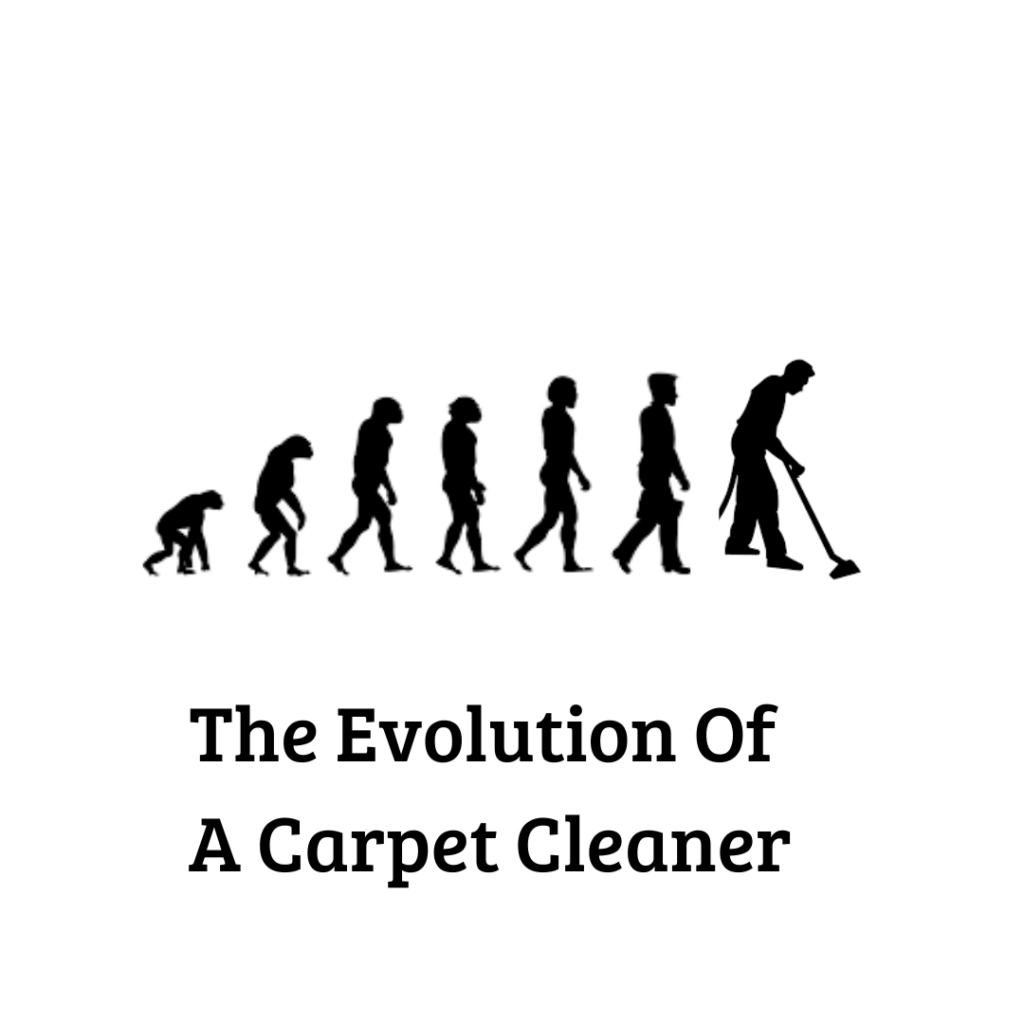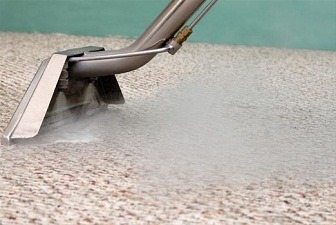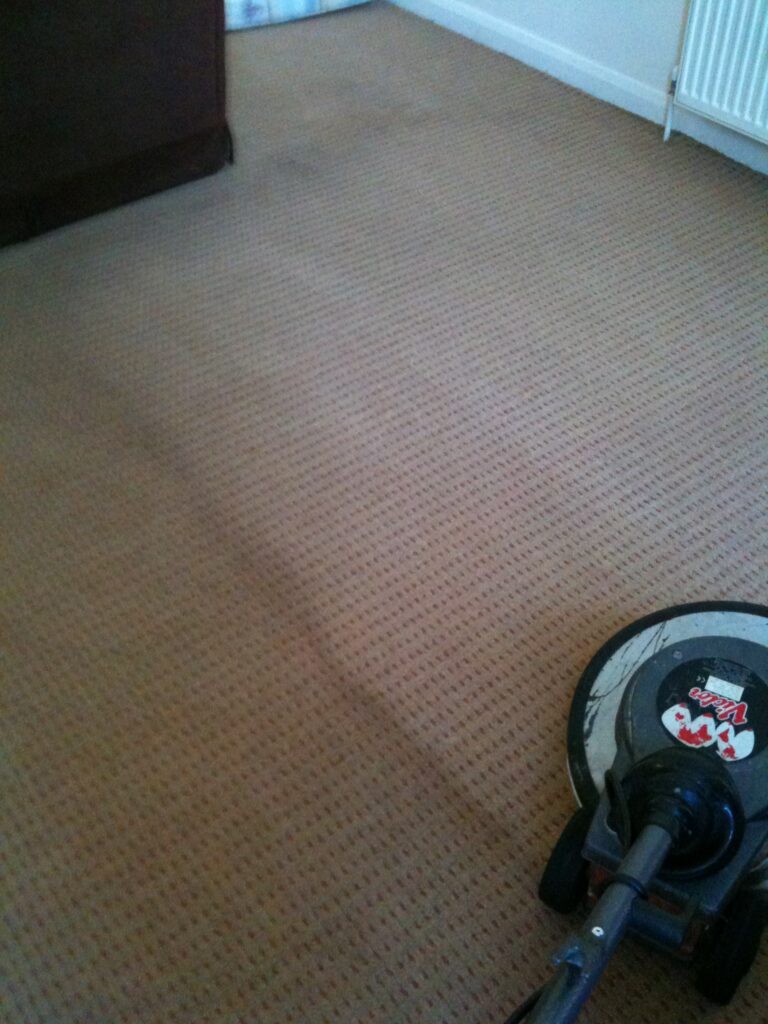The Evolution Of Carpet Cleaning

As the saying goes, “cleanliness is next to godliness,” and that sentiment has been true throughout history.
When it comes to our homes, one area that often requires special attention is our carpets.
Over the years, carpet cleaning methods have evolved to ensure that our carpets not only look clean but also contribute to a healthy living environment.
In this article, we will explore the evolution of carpet cleaning, from the early methods of carpet beating and shampooing to the latest fast-drying low moisture cleaning techniques.
Part 1. Early Carpet Cleaning Methods: Carpet Beating and Shampooing

In the past, maintaining clean carpets was a labour-intensive task.
One of the earliest methods of carpet cleaning was carpet beating.
People would hang their rugs or carpets outdoors and use a carpet beater, a tool resembling a long paddle with a wide, flat surface, to beat the dust and debris out of the fabric.
This process helped to remove loose dirt and dust, but it was not very effective in tackling stains or deep-seated grime.
Another early carpet cleaning method was shampooing. This technique involved applying a soapy solution to the carpet and agitating it with a brush. While this method was an improvement over carpet beating in terms of stain removal, it had its limitations. Shampooing required a significant amount of water, resulting in extended drying times and the potential for mould and mildew growth if the carpet didn’t dry fully.
Part 2. The Rise of Steam Cleaning

The advent of steam cleaning marked a significant milestone in the evolution of carpet cleaning.
In the 1800’s, steam-powered machines became widely available, revolutionizing the way carpets were cleaned. Steam cleaning involves using hot water extraction to eliminate dirt, stains, and allergens from carpets.
Steam cleaning machines work by injecting hot water mixed with cleaning chemicals into the carpet fibres.
The combination of heat and pressure helps loosen dirt and grime, which is then extracted using a powerful vacuum.
Steam cleaning gained popularity due to its effectiveness, but it still had drawbacks. The extended drying time was a common complaint, as it could take many hours, or even days, for the carpets to fully dry. This resulted in mildew and mould growing under the carpet, as well as nasty odours from bacterial growth. This led to the need for faster, more efficient carpet cleaning methods.
Part 3. The Latest Fast Drying Low Moisture Cleaning

In recent years, professional carpet cleaners have embraced the latest technological advancements to refine their cleaning methods further.
One such innovation is the fast-drying low moisture cleaning technique. This approach combines the effectiveness of hot water extraction with low water usage to achieve quicker drying times.
Fast-drying low-moisture cleaning involves using specialized equipment and cleaning solutions that require significantly less water compared to traditional steam cleaning. The cleaning solution, often encapsulation or nano product, is applied to the carpet fibres and agitated to loosen dirt and stains. The solution then crystallizes, encapsulating the dirt particles, which are subsequently removed.
The benefits of fast drying low moisture cleaning are numerous:
1. Reduced drying time: Unlike traditional carpet cleaning methods that can take hours or days to dry, low moisture cleaning allows carpets to dry in as little as 20 minutes to occasionally up to two hours.
2. Prevention of mould and mildew: With shorter drying times, the risk of mould and mildew growth is mitigated, ensuring a healthier environment for both homeowners and their carpets.
3. Environmentally friendly: Low moisture cleaning uses less water, minimizing water waste compared to steam cleaning. Additionally, the cleaning solutions used are biodegradable and organic, reducing their impact on the environment.
4. Efficiency and convenience: The fast-drying nature of low moisture cleaning allows homeowners to quickly resume normal activities in their living spaces without disruptions caused by extended drying times.
Conclusion
The evolution of carpet cleaning has come a long way, from the early days of carpet beating to the use of steam cleaning and the latest fast-drying low-moisture cleaning methods. Each development has aimed to provide homeowners with cleaner, healthier carpets while addressing the issues of drying time and overall convenience.
As technology continues to advance, we can expect further refinements in carpet cleaning techniques. Whether it be innovative cleaning solutions, advanced equipment, or eco-friendly practices, the goal remains the same: to maintain clean and fresh carpets that contribute to a comfortable and healthy living environment.
So, the next time you clean your carpets, consider the evolution they have gone through and the latest fast-drying low moisture cleaning options available. Your carpets will thank you, and so will your home.
Ready to experience the benefits of modern low-moisture carpet cleaning?
Contact us at ACS today to schedule an appointment and give your carpets the care they deserve. We can also dry your carpets even faster because we’ve got some really neat equipment to do that. And it’s currently on a great offer too.
